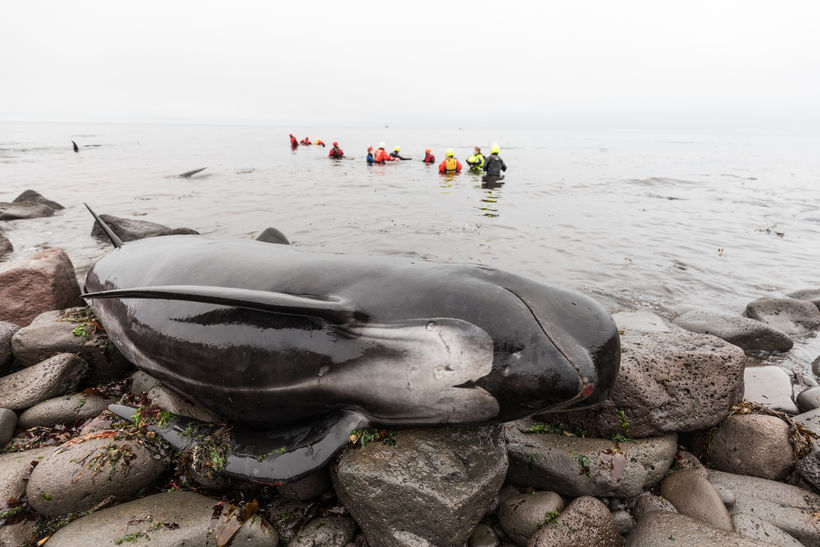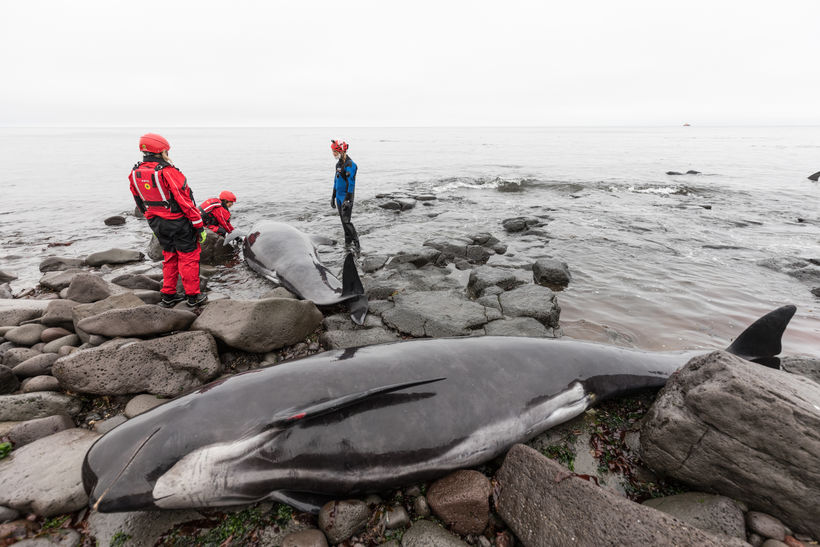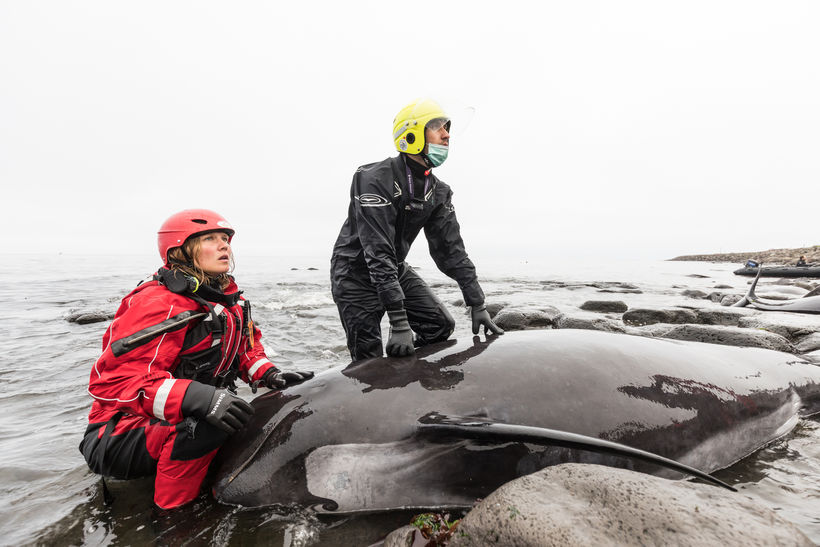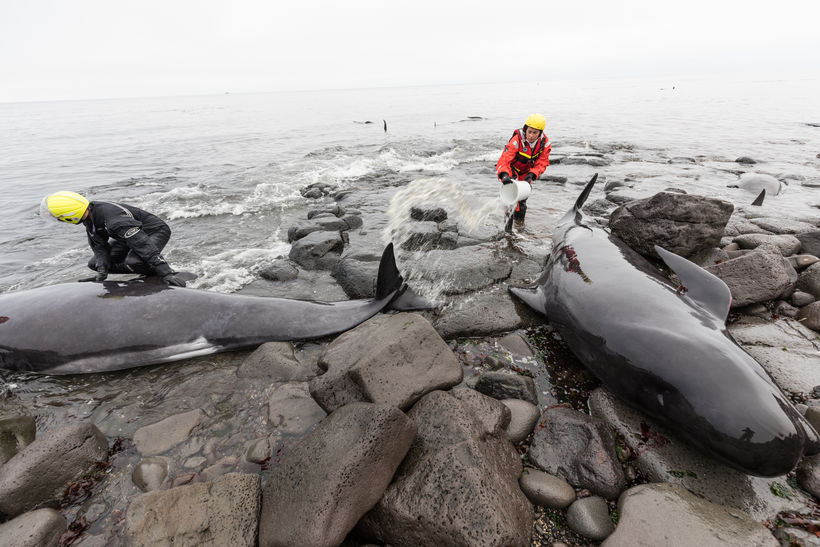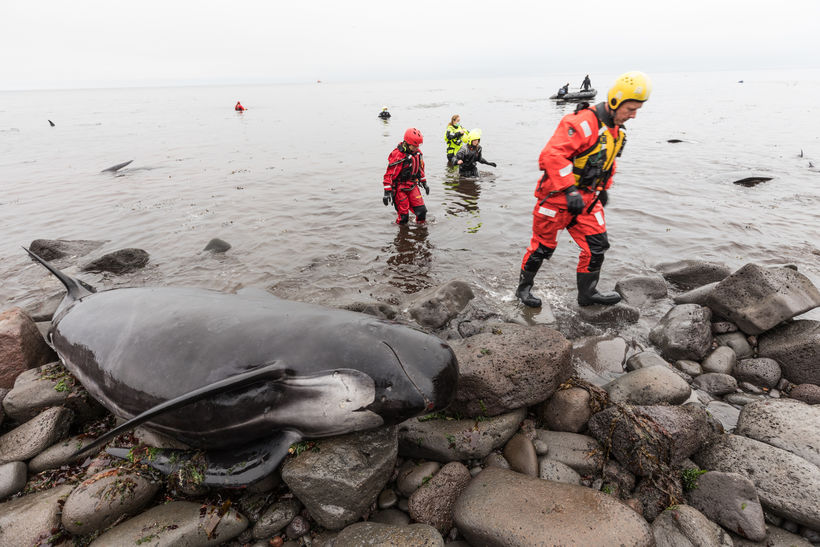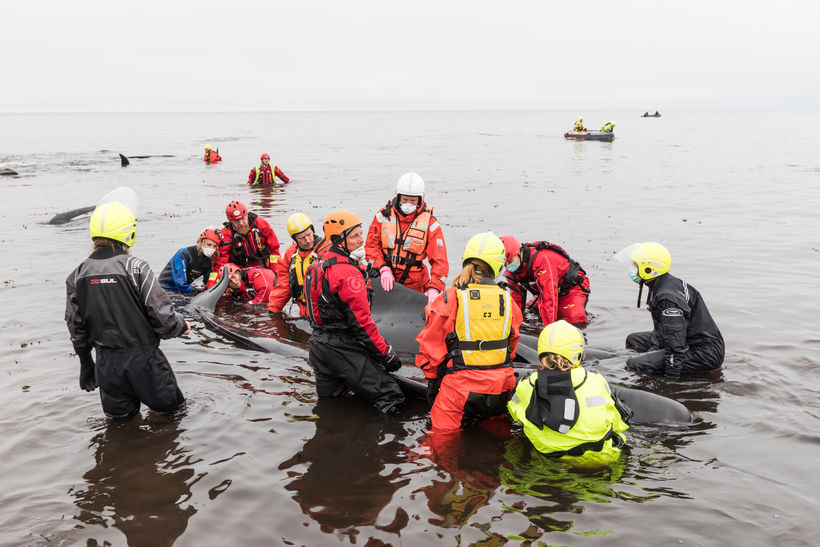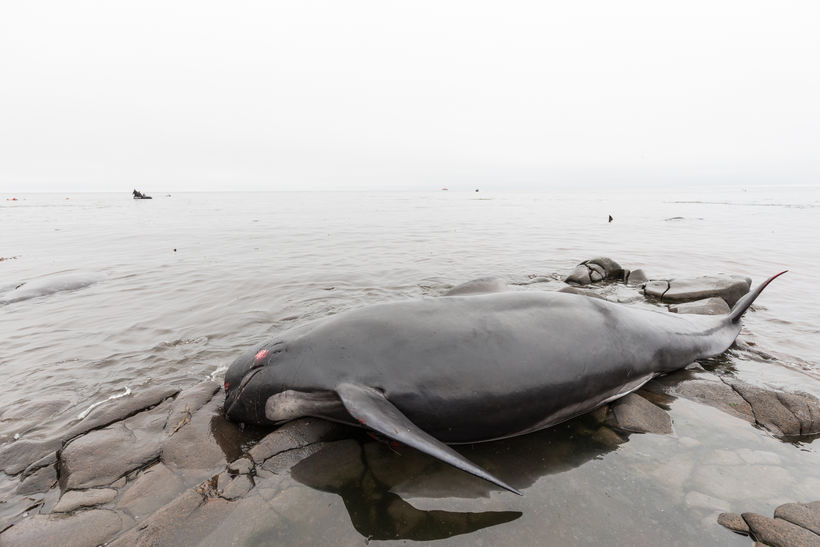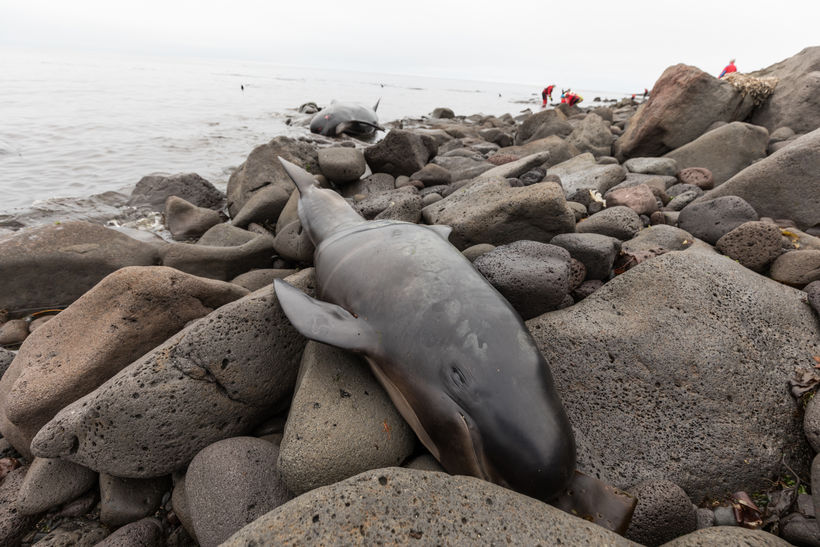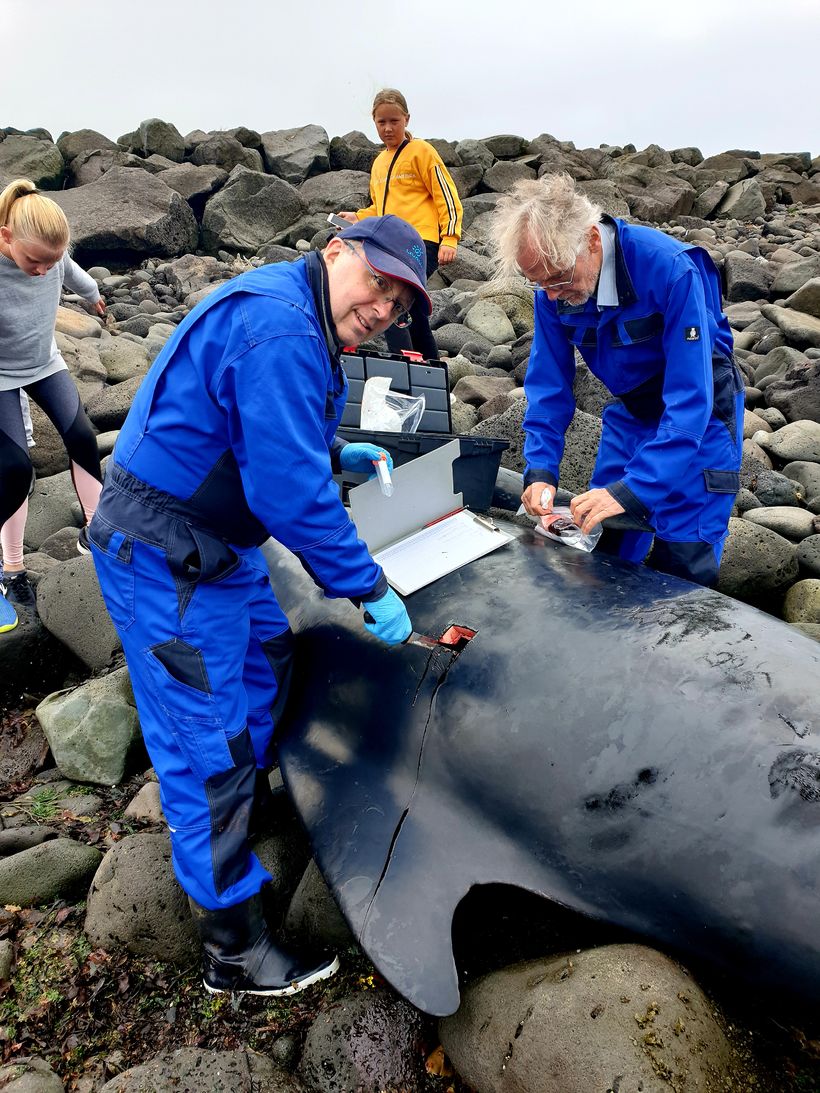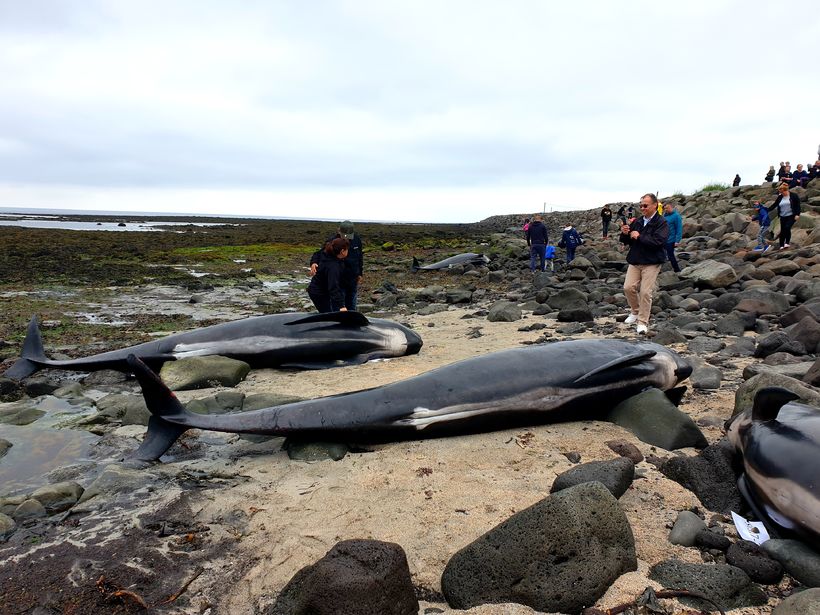Thirty Pilot Whales Rescued in Reykjanes: Video
Rescue workers and other volunteers succeeded in rescuing about 30 pilot whales early Saturday morning that had beached near Garður, on the Reykjanes peninsula, Southwest Iceland, mbl.is reports. A total of about 50 whales beached there, 14 of which did not survive.
“Some were dead already when rescue workers arrived,” Edda Elísabet Magnúsdóttir, marine biologist, told mbl.is , “and in the middle of the night, many had died, and some died later in the morning.” She stated that rescuing 30 whales was a major accomplishment. Altogether, about 90 rescue workers were involved in the rescue, in addition to 20-30 other volunteers.
Edda told RÚV that moving such whales is no easy task, with each one of them weighing up to a ton. They can also carry a virus, which can be transmitted to people. “The animals are under a lot of stress, and some are in shock,” she stated.
Using pumps, rescue workers sprayed water on the whales to keep them moist, and as soon as the tide began to ebb, they followed them out to sea. This was the first time a new work procedure in the rescue of whales was being used.
Edda stated that rescue workers did a very professional job, and she explained that it matters which animals are rescued first. When it comes to pilot whales, you need to worry first about the females. “If you begin by taking the calves, they will return, because they won’t leave without their mother. It’s the mother that leads the family unit.”
On July 18, dozens of beached pilot whales were detected on Löngufjörur beach on the Snæfellsnes peninsula, West Iceland. Why so many whales have beached recently is not known, but the theories are many, which attempt to explain it.
Edda tells Morgunblaðið that this has been happening seasonally, which suggests that the behavior could be explained by the animals’ food or reproduction time. She believes the schools of whales southwest and west of the country are traveling closer to one another than before, increasing the likelihood of their getting into trouble. She also points out that the latest incidents have happened during spring tide, when the difference between high and low water is the greatest, meaning that the water ebbs fast, leaving them beached, should they have strayed into shallow waters.
Víkurfréttir published this amazing video on Saturday. You can see more photos here .

